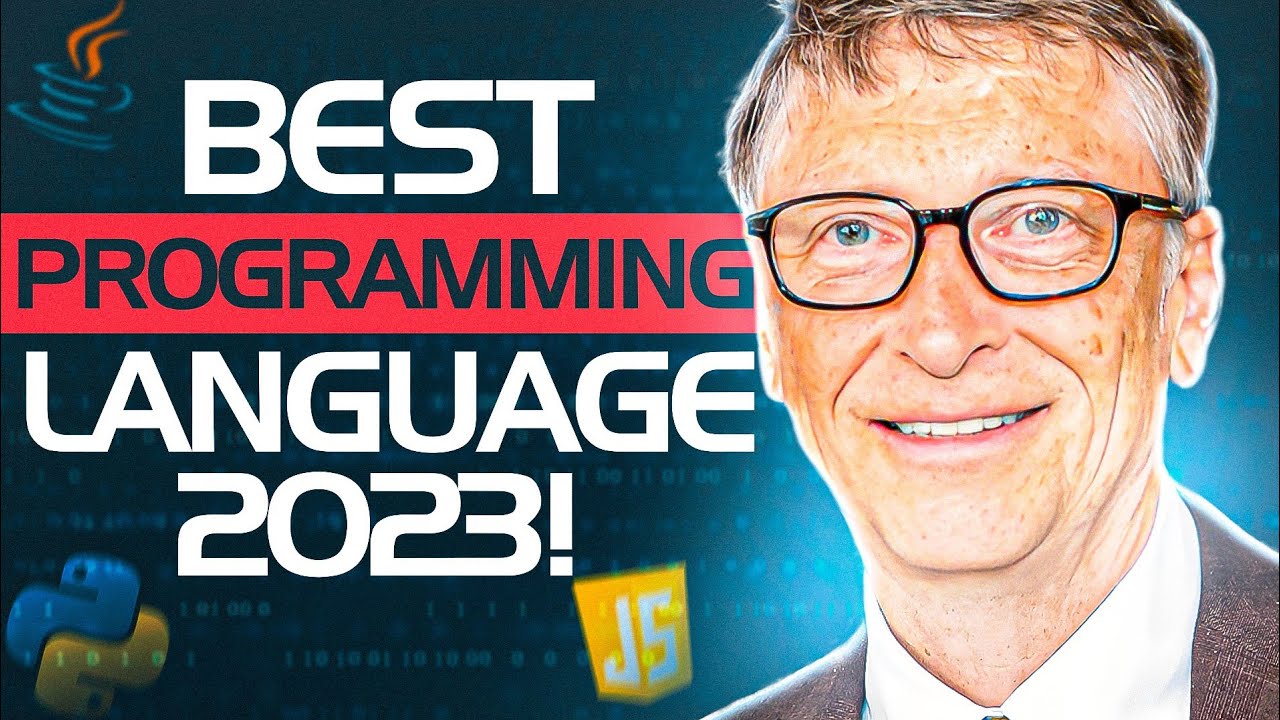Bill Gates Just Revealed The Best Programming Language for 2023!
 Sumi Sangar
Sumi SangarTable of contents

Bill Gates has just revealed the best programming language for 2023, and guess what? It's not what you're thinking. Bill isn't arguably one of the most successful programmers in the world today. He's been around long enough to know what works and what you'd rather put aside. In this blog we're going to cover all the important stuff about his programming history, the languages he used as a young developer, and whether you could still use them in 2023. At the end, we'll highlight some of the most popular languages today, and which ones you might want to choose. Keep reading.
Bill Gates has a programmer. Bill may not be very creative with his fashion choices, but if there is one thing that sets him apart, it's his long history of invention and tinkering around with tech objects. He was born on the 28th of October 1955 and was barely eleven before he began to battle with his parents. As he once said to a counsellor, I'm at war with my parents over who is in control. When he eventually moved to Lake Side School in Seattle, he became passionate about coding with a computer you would probably consider clunky by today's standards. He learned his first programming language, basic, which stands for Beginners All-Purpose Symbolic Instruction Code with this computer, and it was also there that he met Paul Allen, his future co-founder. At 13, Gates successfully designed his first program, and guess what?
It was for Tick Tack Toe. He and Allen, who by the time had become a bunch of nerdy computer-intoxicated school boys, also got a chance to use another computer operated by a Seattle company. This was the PDP-10, and in no time, both had learned to circumvent the time cap on the system, enabling them to sign in as its operator and gain free time. When that option petered out, they moved on to the University of Washington, where they pretended to be students to access their computers. When they were discovered, they simply switched to new computers in other buildings at the university.
A major highlight of Bill Gates' early programming career was his and Paul Allen's development of traffic data, a software that held to analyze traffic volumes. This program was run using Fortran, and it earned them a sum of $20,000 in revenue. During his days at Lakeside, Gates developed a timetable organizer which was far more efficient than what the school had been using. He also made a couple thousand dollars doing some programming work over the summer. Gates and Allen would witness what was probably their first business disappointment when traffic data took an early nosedive. Nevertheless, by his second year at Harvard, when he decided to drop out of Microsoft, Gates was fairly ready for the tech world. He had worked on programs for the government, tried his hands at payroll software, and bunked with several private companies on their computer architectures.
Doing all these meant that he was familiar with several languages, including BASIC, LISP, Fortran, and the PDP-10 machine language, not to mention his experience in using his skills to make money. The first product Allen and Gates offered at Microsoft was a programming language for the Altair Microcomputer produced by MITS. This language was a version of BASIC, and it constituted the sale that laid the foundation for the company's future. Now should you use the programming languages utilized by Bill Gates? Well, that depends on several factors. For instance, while there are a lot of people who believe Fortran is old and not worth learning, scientists and engineers will probably disagree. At NASA and other institutions, that compute large amounts of complicated data, Fortran is considered a very reliable tool. Some might even argue that it is easier for new programmers to master Fortran than languages like C and C++.
If you choose to learn it, try sticking with its recent iterations. We would advise that you should not go any further than Fortran 2003. On the other hand, BASIC is not so popular because it had been overshadowed by other languages. It began losing its edge in the 1990s when its competitors improved and catered better to emerging needs. But while it might be dismissed as something you should only learn as a hobby, it's still a simple language. Very useful for first-time programmers. Your decision to learn any or both of these languages will ultimately depend on your level of skill and the area in which you intend to use them.
Languages you should be looking out for in 2023?
Let's see a couple. JavaScript This language was created in 1995 and was initially known as LiveScript. It shares similarities with its sibling, Java, but it also is unique in several ways. JavaScript is widely used in web pages where it allows developers to create multiple personalities for end users. It is used in the design of games, mobile applications, and web servers. The language is highly recommended for beginners because it is both easy to learn and use. Also due to its popularity, learners can be sure of an extensive range of resources, communities, and employment opportunities. Java One thing that sets Java apart from other languages is its adaptability to different operating systems.
It is described as WARA, which means right once run anywhere. For this exact reason. Java can be used on iOS, Windows, Mac, and Android operating systems. It is popular in mobile devices with billions of running applications that were designed on Java. Some of the most popular platforms today, such as YouTube, Twitter, and Amazon, have backends that were developed around this language. You will also find Java in sectors such as finance, electronic commerce, and mobile app development. While the language is a bit more complex, there is no shortage of communities and resources for programmers. Python If you are interested in writing code for AI, machine learning, websites, 2D, 3D, and gaming products, Python is the undisputed leader in this regard. It is also useful in back-end and app development. With Python, developers can deploy several programming styles, including object-oriented and reflective when drafting code. Python is a great option for beginners because of its high level of readability, user-friendliness, and interoperability.
It is ranked as the easiest programming language to learn, with a broad online community that offers tips and resources. The code is also supported by Microsoft, Bill Gates' company, which pledged $150,000 to the development of its learning in 2021. In terms of demand, it is highly sought after by employers, with the average annual salary exceeding $100,000. And like Java, it is also popular among big tech platforms such as Instagram and YouTube. What other languages would you recommend for coders in 2023? Let us know in the comments section, and if you are interested in learning Python. Have fun, and see you in the next blog!
Subscribe to my newsletter
Read articles from Sumi Sangar directly inside your inbox. Subscribe to the newsletter, and don't miss out.
Written by

Sumi Sangar
Sumi Sangar
Software Engineer with more than 10 years of experience in Software Development. I have a knowledge of several programming languages and a Full Stack profile building custom software (with a strong background in Frontend techniques & technologies) for different industries and clients; and lately a deep interest in Data Science, Machine Learning & AI. Experienced in leading small teams and as a sole contributor. Joints easily to production processes and is very collaborative in working in multidisciplinary teams.